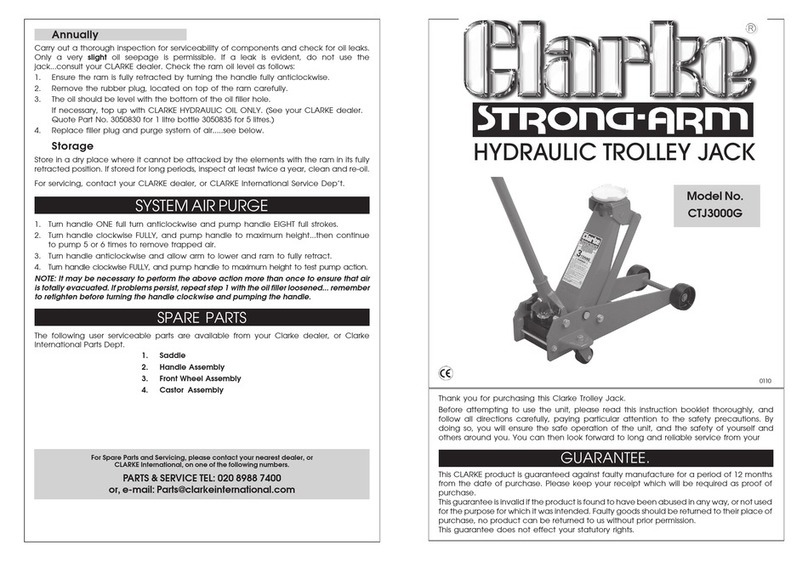
Maintenance Instructions
If you use and maintain your farm jack properly, it will give you many years of service.
Follow the mainte nance instructions carefully to keep your jack in good working condition.
NEVER PERFORM MAINTENANCE ON THE JACK WHILE IT IS UNDER LOAD.
Cleaning
If the moving parts of the jack or the standard bar are clogged, use air pressure, water
pressure, or a stiff brush to clean. Use a non-flammable cleaning solvent or another good
de-greaser to clean the jack. Remove any existing rust, preferably with a penetrating
lubricant.
Binding
If the climbing pins start to bind in the holes of the standard bar the jack will not operate
properly and safely. Rusty climbing pins, dirt, or worn bar can be causes of binding. Clean
and lubricate the lifting mechanism as indicated in the Lubrication section. Test the jack by
lifting it up without a load. If the binding continues, send it to our Factory Service for repair.
If the jack binds while under a load, use a jack with equal or larger load capacity to lower
the load safely to the ground. After unbinding the jack clean, lubricate and test as
described at the start of this paragraph.
Storing the Jack
1. Place the handle in the upright clipped position against the steel standard bar.
2. Raise the reversing latch until it locks in the up position.
3. Store in the upright clipped position in a dry location, preferably indoors.
Tip: If the jack is stored outdoors, consider using a farm jack protective cover accessory.
Storing the Jack
1. Pivot the jack to a horizontal position. Rest the steel handle of the jack on top of the
steel standard bar.
2. Secure the jack in this position with the lock-pin through the holes in the tubular
mounting bracket.
3. Secure the lock-pin in the tubular mounting brackets with the safety cotter pin.
Inspection
You should inspect the jack for damage, wear, broken or missing parts (e.g.: climbing pins)
and functionality before each use (see General Safety: Inspection). Follow lubrication and
storage instructions for optimum jack performance.
























